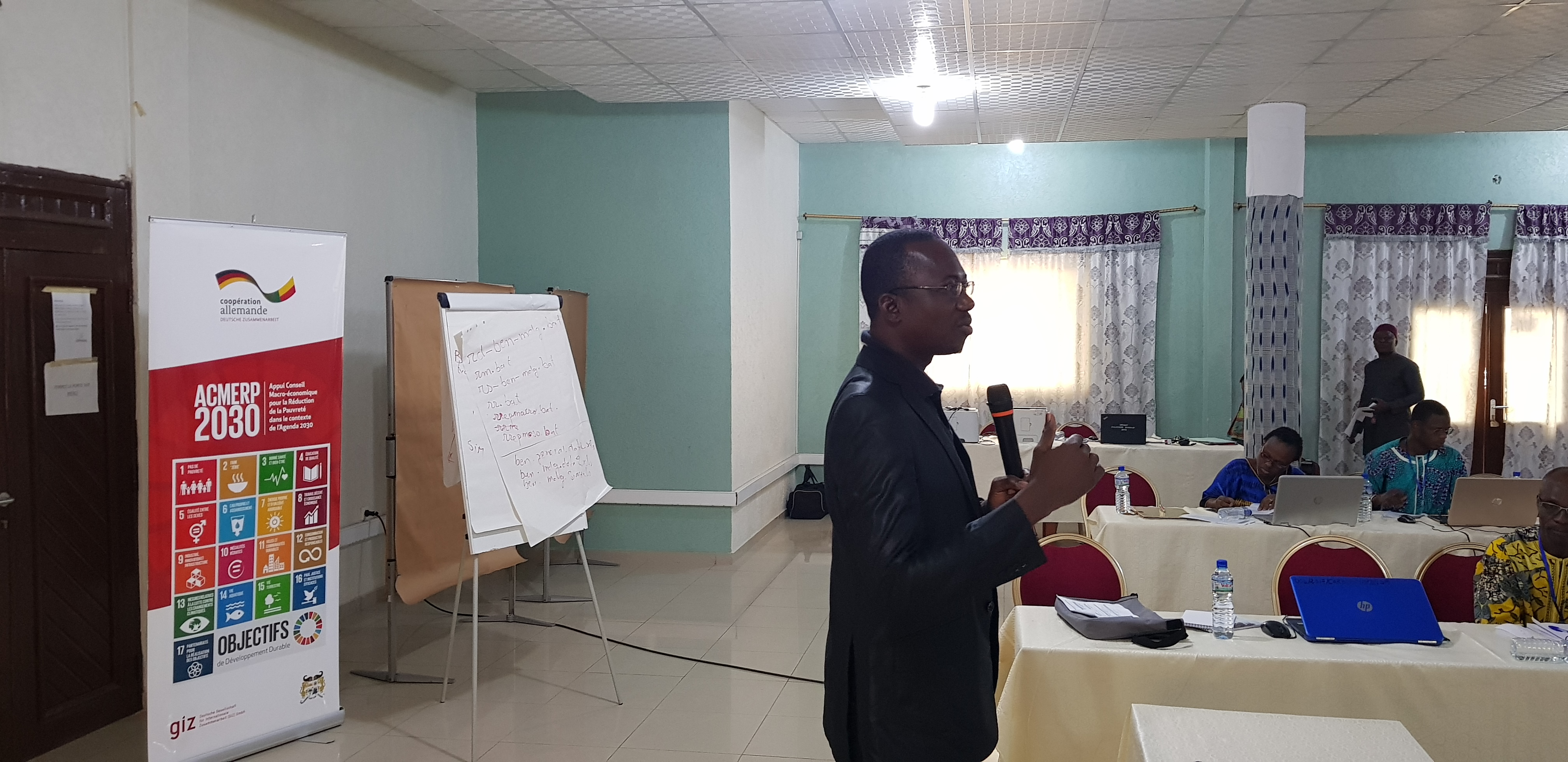
Dr Yaya KY provided training on macroeconomic modeling for assessing the impact of public spending on the Sustainable Development Goals (SDGs) indicators in Benin. The training took place in Grand Popo 125 km from Cotonou and brought together 22 participants including six women. They are the focal points of the SDGs in 12 ministries. The main objective of this training was to ensure better ownership, actors in charge of the implementation of the SDGs, and macroeconomic modeling techniques. Specifically, it involved (i) constructing models taking into account link variables with the SDG priority targets and their indicators; (ii) assess the impact of public policies on the implementation of the SDGs; (iii) perform simulations to determine the implications of the model for achieving the SDGs.
The training was provided by Dr. Yaya KY Senior Consultant and Dr. Alain BABATOUNDE National Consultant. It took place from 17 to 21 December 2018 and focused on six theoretical modules and a phase of practical work taking into account the data of the Beninese economy.
The different modules introduced public policy evaluation models first, before introducing computable general equilibrium models by highlighting its characteristics, strengths and weaknesses. Then the basic commands of the GAMS software were presented including those corresponding to the different parts of a MEGC.
The MAMS model has been presented in detail through the formulation of its behavioral equations. Particular emphasis has been placed on modeling the various SDGs. The economics data needed to run the MAMS model and the data that inform the SDG modules have been presented. The MAMS file structure and MS-DOS commands are presented and applied to data from a developing country.
With the help of the departments some data has been updated. Unfortunately all the data was not available. However, simulations on the achievement of the SDG targets were carried out as well as several closure options in order to explain to the participants the importance of the closures but also the interpretation of the results.
The discussions made it possible to explain to the participants that the MAMS model is not relevant to evaluate all the SDGs and that it would be necessary to resort to microsimulation models to address certain SDG-related issues on poverty, protection and social protection. social etc. However, the MAMS model was to be "scaled up" to take into account the SDGs such as agricultural productivity, green energy, etc. This work is in progress.
In terms of recommendations, it would be wise for follow-up activities to be organized to assist participants in using the model over a period to be defined because the number of training days is (5 days) small enough to allow participants who have never done modeling before to master MAMS. In addition, IDEP should include in its training offer "augmented" MAMS training. The institute can sensitize the countries that do not know the model on the need to dispose of it in order to better plan the allocation of their public resources between the different objectives.
